
Brown bears have long been considered strong and invincible predators. In the past centuries, however, they were almost wiped out by selective hunting and the destruction of their habitats.
The brown bear (Ursus arctos) was once native to most of Europe. Bears were already popular motifs for rock engravings or cave paintings. A killed bear provided many people with food and warm clothing at that time. In the Middle Ages, the bear was a common heraldic animal along with the eagle. Place names such as “Bear Valley” or “Bear Cave” are still known today. And a cuddly plush bear can be found in many children’s rooms.
Due to the exponential growth of the population and the resulting large-scale destruction of forests in favour of farmland and settlements, more and more bear habitat has been destroyed. At the latest when man began to hunt the bears with firearms, their population decreased inexorably. Only in Italy and Spain as well as in remote areas of Eastern Europe, the brown bear survived. From there, the brown bears returned sporadically to Central Europe via the forests of former Yugoslavia, Slovakia and especially Romania.
In many European countries, however, the brown bear is still considered extinct. In Germany, the last brown bear was shot in 1835. In May 2006, a brown bear immigrated to Germany for the first time again, but was killed after only a few weeks. Many experts agree that the brown bear would be a real gain for the diversity of the native fauna. However, the potential for conflict with a still skeptical population should not be underestimated.
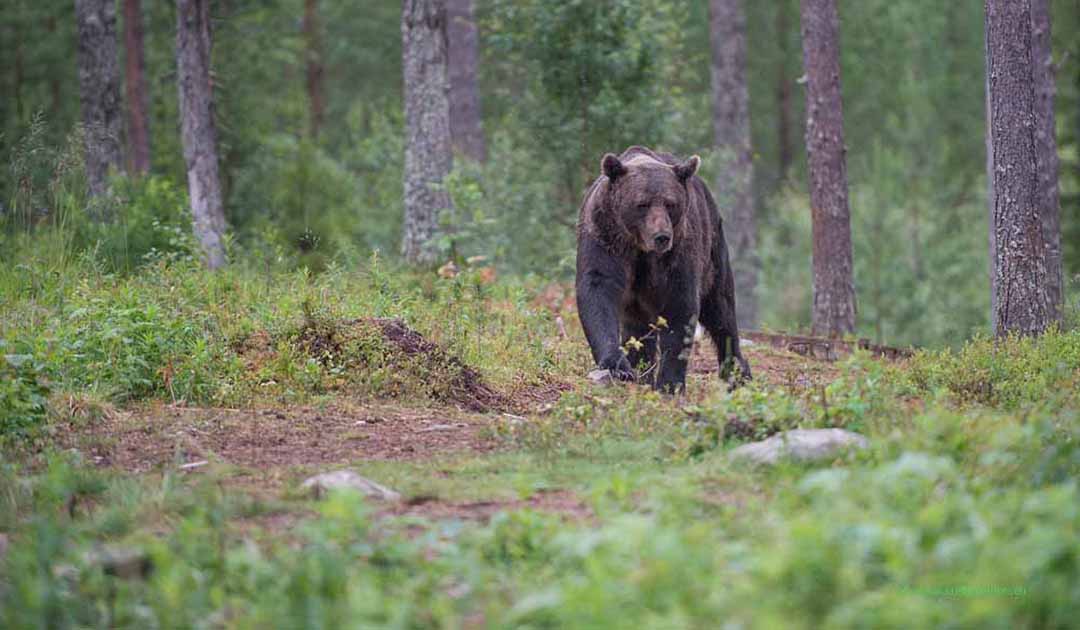
Although the brown bear prefers landscapes not occupied by humans, forests and sparsely populated areas, it also finds its way in modern cultivated landscapes. The brown bears find good conditions in Scandinavia. It is estimated that there are approximately 200,000 brown bears living in the wild worldwide. The majority of them live in Russia. In Europe, approximately 17’000 brown bears are said to still live in the wild today. About 90% of them live in Scandinavia, the Carpathians, the Balkans.
But even in Scandinavia, the brown bears experienced a difficult time, because for a long time the local population was not exactly sympathetic to the so-called big five – wolf, wolverine, lynx, golden eagle and bear.
While Sweden protected the brown bear as early as 1898 (!), Norway continued to pay a premium for killing bears for a long time. So it is not surprising that the brown bear was considered extinct in Norway in 1980. Only a few bears have been sighted in the border area to Sweden.
In Sweden, however, the bear population grew steadily thanks to conservation measures and in 1984 a Swedish research project was started to study bear behaviour. More than 600 brown bears were equipped with a transmitter, which made it possible to follow the migration routes of brown bears in Sweden but also in neighbouring Norway. This gave the researchers an overview of the changes in the population. In 1987, the bilateral brown bear project became a Scandinavian brown bear project. Today there is again a small population of brown bears in Norway, but they are only found in the border area to Sweden. However, experts believe that there is basically habitat for up to 1,000 bears in Norway.
Since the probability to photograph a brown bear in Scandinavia is still very small, we decide to book a bear safari with a provider outside of Kuusamo (Finland). The Finnish-Russian border area to the east of Russia is known to be a place where bears can be seen in the wild.
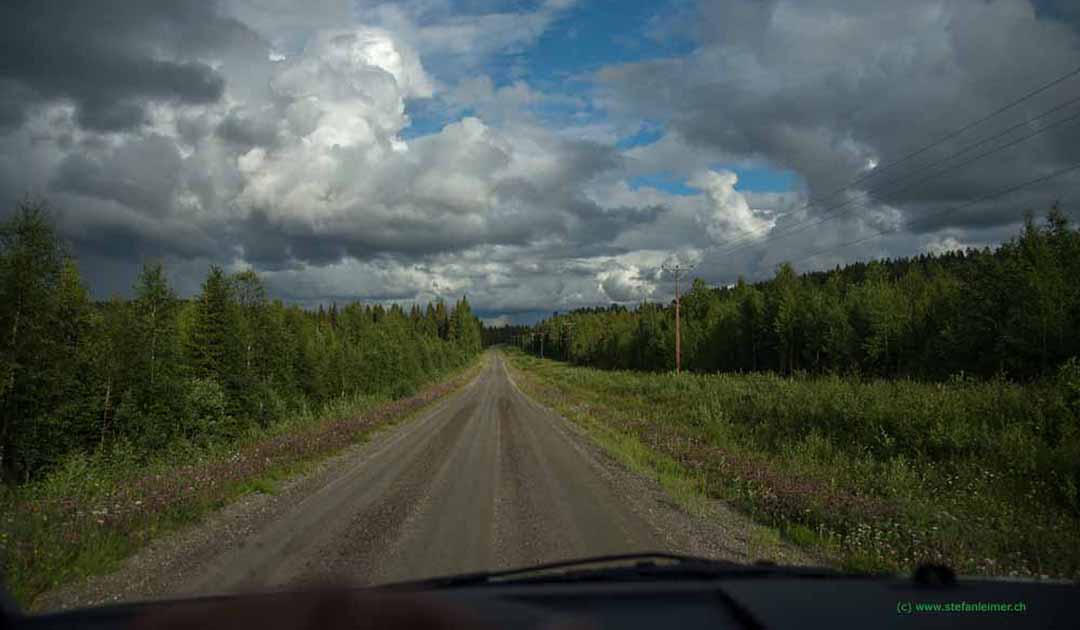
The next morning we follow the instructions of the navigation system. In the deserted landscape we drive on gravel roads further and further east towards the Russian border. After about an hour we reach a homestead with a husky farm, where we are warmly welcomed. Afterwards we continue by car on bad roads for another 20 minutes until we stop at the edge of a forest. From here we walk to a clearing where we set up provisionally in a spartan hut. There are a couple of bunk beds for the weary and an outhouse in the corner, separated from the main room only by an old curtain. The window panes of the hut are mirrored on the outside and in the walls below there are openings covered with cloths. This allows the lens to be poked through to the outside for optimal photography. Excitedly, we brace ourselves for a long wait.
The male brown bears can become heavy up to 300 kg. Their sense of smell is extremely well developed and 100,000 times finer than that of humans. Already at the reservation the day before we were advised not to use perfume or mosquito spray. With their fine nose, bears can smell carrion several miles away.
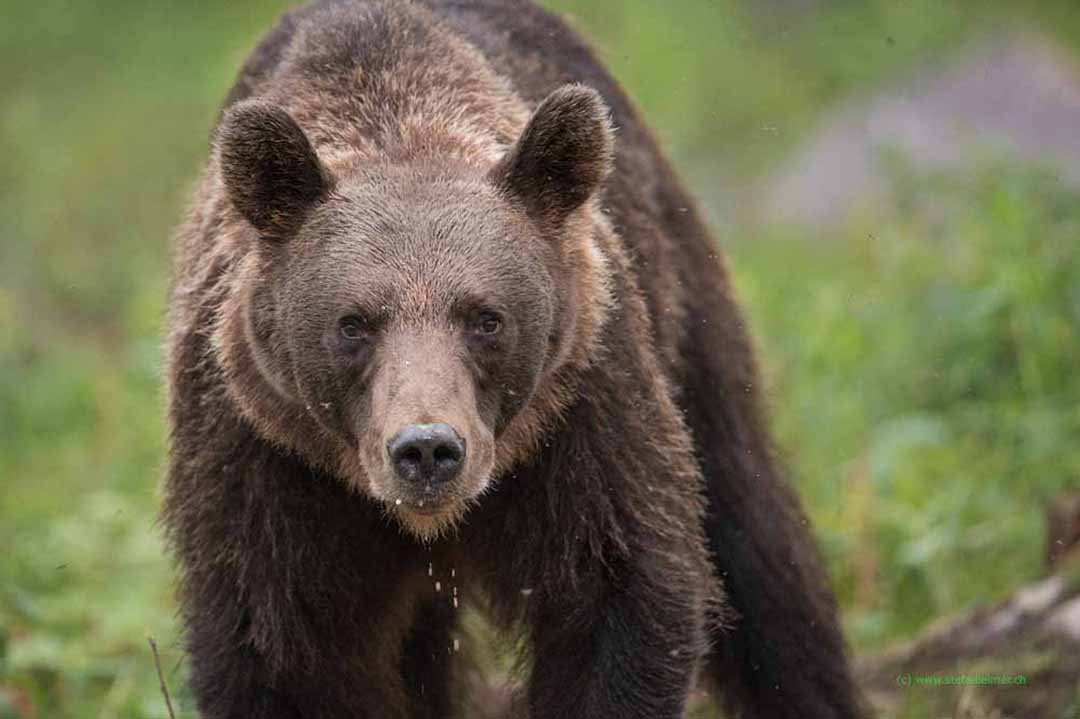
Brown bears belong to the order of predators, but are omnivores. Although they have the typical fangs of predators, the wide-crowned molars are well suited to grinding plant food. They especially like fresh berries and sweet fruit. But they also do not spurn carrion, roots, fish, mice or lemmings, eggs of ground nesting birds and many plant species. A pregnant female bear eats 2-3 kilos of ants per day to meet its protein needs. Bears especially love honey. They don’t let the angry bees stop them and open the hive with their big paws.
In the wild, the bear spends 2/3 of the day foraging. The German expression “Bärenhunger haben” (to have a ravenous appetite) does not come from nowhere. They eat up to twelve kilos every day to build up a thick layer of fat for the winter.
In winter, i.e. from November to March, April brown bears retreat into a suitable den. Typically, it is dug or at least partially made by the bear. In order to limit energy consumption as much as possible during this so-called hibernation, the body temperature is lowered by 7-8 degrees during the sleep phase and breathing and heart rate are greatly reduced. The bear may leave its den from time to time during this period to stay in its immediate vicinity.
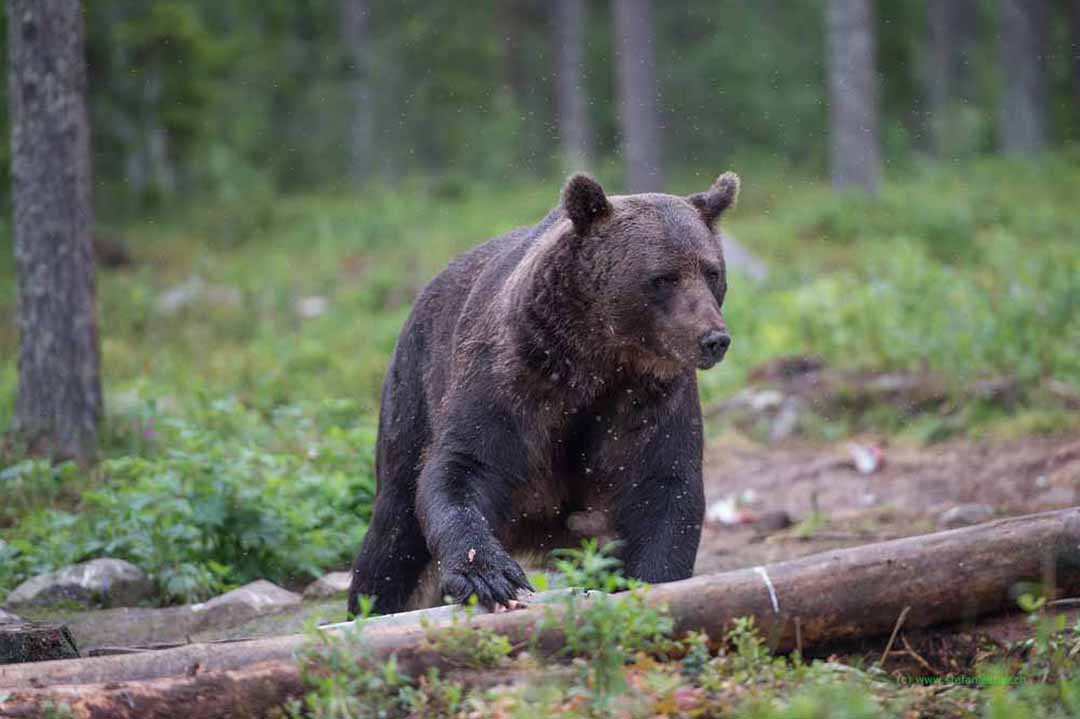
Between January and March, after a gestation period of eight months, a mother bear gives birth to up to four cubs in her hibernation den. The newborns are born naked, blind and toothless and weigh only 300 to 400 grams at birth. They are still completely dependent on their mother. Already three months later – well nourished thanks to the fat mother’s milk – they leave their hiding place for the first time, but always stay close to their mother.
Bears with cubs defend their offspring vehemently against other animals and us humans. But only about half of the offspring survive the first three years. The female bear has to watch out for male brown bears that are willing to mate. These kill off young that are not their own so that their mother is ready to conceive again. The males hope to be able to pass on their own genes in this way.
In the winter months, the bear benefits from its thick layer of blubber. It now provides it with the nutrients it needs to survive. When it leaves its quarters in the spring and sets off again, it will still have lost between 20 and 40% of its body weight.
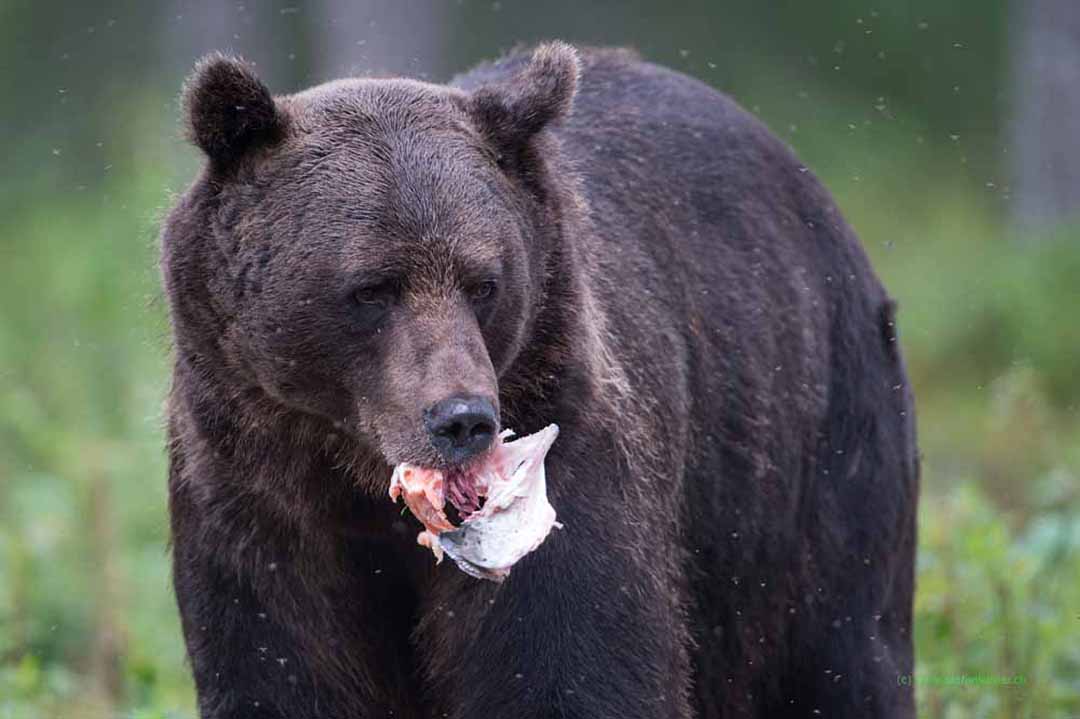
The organisers of the bear safari also make use of the bears’ keen sense of smell. Around the observation hut food hiding places for the bears are buried. For me as a nature photographer this has a bad taste, but they are still free-living bears. And most importantly – it works. After two hours the first brown bear appears between the trees. The massive male approaches slowly, almost cautiously. I set the camera’s shutter release to “silent” as a precaution. Still, I hardly dare to take pictures. Each release of the camera shutter feels like a rifle shot to me. Even though European bears do not eat salmon in the wild… our bear is not disturbed by the camera noise and calmly eats the fish deposited for him.
Only when I bump into the wall with my camera does he startle and disappear into the forest. Guiltily, I look at our guide. But he waves it off and whispers, “He’ll be back…” And indeed, half an hour later, the bear shows up again in the clearing and makes a beeline for the second food source.
Bears are generally considered to be not very skilled hunters. However, they are predators and encounters in the wild must be taken seriously. People tend to forget that bears can reach speeds of up to 50 kilometres per hour. To kill the prey, they mainly use their great physical strength. With the somewhat untargeted approach, powerful paw blows usually cause severe injuries. Sometimes the skull or spine of the prey animal is broken and the head appears oddly angled. Bites are more common in the neck and shoulder area. Bears prefer to eat the innards and therefore open the thorax and abdomen first. The sight of several sheep killed in this way does not help its bad image and contributes to the fact that the bear is not welcome everywhere.

A total of four bears show up in the clearing that evening. The hierarchy between these individuals seems to have been settled long ago. The one who is lower in rank keeps a safe distance and waits patiently for his turn to go next. For the last one, however, only a few crumbs remain.
Despite the polar day the light becomes too bad to take pictures around midnight. However, our expectations were exceeded and we decide to end the safari. Only now we realize that we have to walk back through the dark forest… The tour guide doesn’t seem to care and so we follow him closely until we reach our car safely.






